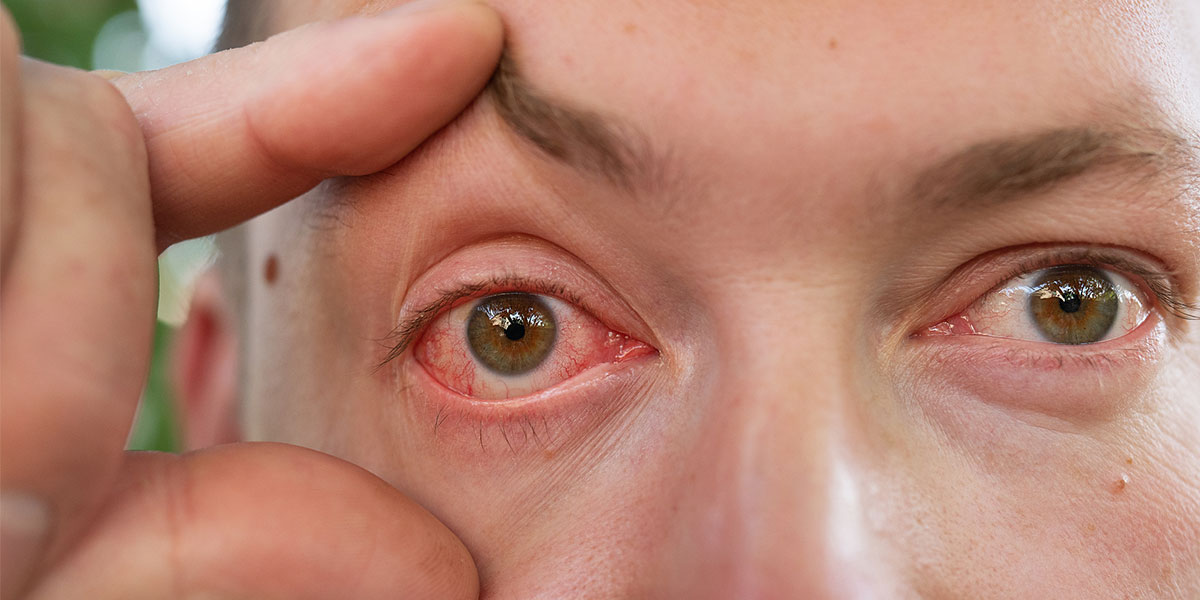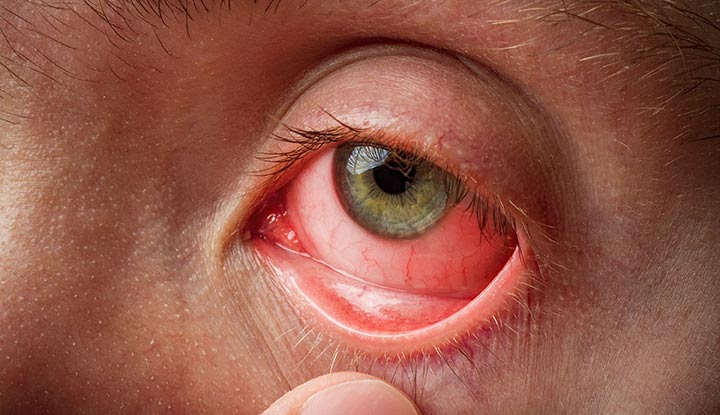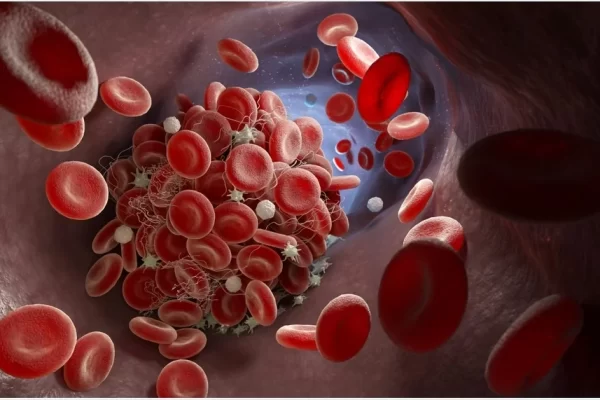The scorching days are back, and so is the ‘pink eye’ infection! Yes, we are talking about conjunctivitis (better termed as Keratoconjunctivitis). This seasonal eye infection comes with a host of symptoms like – itchiness in your eyes, swollen eyelids, constant watering of eyes, and white discharge. If you, too, have been itching your eyes for some time now, the chances are high that you have caught the ‘infection.’ But you could be completely wrong! Do you know what is commonly misdiagnosed as pink eye as well? Styes, dry eyes, blepharitis, keratitis, iritis, and a couple more eye infections!
Are you surprised? What you thought was a simple allergy might be something more serious. No worries! We have you covered. In this post, we will elaborate on those infections misdiagnosed as pink eye, their symptoms, and the concerned treatments. Let us elaborate further –
Table of Contents
What is commonly misdiagnosed as pink eye?
In this section, we will give you an insight into some of the common eye infections that are more than often misdiagnosed as a ‘pink’ eye condition and their symptoms –
1. Stye

Getting a stye in your eyes can result in its pinkish/reddish color. Though it mostly develops along the eyelashes, at times it can grow within your eyelid as well. Also known as a hordeolum, this lump is a result of a bacterial infection within an oil gland.
Symptoms
- Swollen eyelid followed by thick discharge
- A gritty feeling in the eyes
- Watery discharge
- Sensitive to light
2. Keratitis

Keratitis, in layman’s terms, what is called inflammation of the cornea, is another of those of what is commonly misdiagnosed as pink eye. Though in most cases, it is similar to the symptoms of pink eye, this condition is way more painful.
Symptoms
- Redness of the eyes
- Extra sensitivity towards light, followed by constant pain
- Watery discharge
3. Iritis

This is a category of uveitis wherein the iris is inflamed. Mostly, it is caused by certain inherent health conditions, but, at times, it could also be due to an injury.
Symptoms
- Redness in the front part of the eye
- Floaters
- Sensitivity to lights
- Blurred vision or significant issues with your vision
4. Blepharitis

For those asking what is commonly misdiagnosed as pink eye apart from the regular cases, we add another name to this list – blepharitis! When your eyelids are inflamed, and there is a combination of dryness and foamy tears, blepharitis is mostly the primary cause.
Symptoms
- Redness of the eye or eyelids
- Dry eyes with foamy tears
- Swelling of the eyelids
- Crusty eyelashes
- Burning sensation in the eyes
- Consistent feeling of a foreign object in your eyes
5. Glaucoma

This is classified under degenerative eye illness where the optic nerve behind your eyes gets affected. Though the initial cases do not have any specific symptoms, in advanced situations, it could affect your vision directly.
Symptoms
- Redness in the eye (often mistaken to be pink eye condition)
- Blurred vision or even partial loss of vision
- A sense of a halo around the lights
- Consistent pain in your eyes
Apart from these misdiagnosed cases, what is commonly misdiagnosed as pink eye also includes – pink eye due to COVID symptoms, uveitis, episcleritis, corneal abrasion, or contact lens injury. You must be careful and do what is required to deal with this situation.
How do the other symptoms differ from the pink eye?

You have read for yourself how and what is commonly misdiagnosed as pink eye could be a host of other eye infections also. Let us now elaborate on precisely how some of those other conditions differentiate from the traditional pink eye inflammation –
| EYE CONDITION | SYMPTOMS | DIFFERS FROM PINK EYE |
| Dry Eye syndrome | A burning sensation, with an increase in tears | The pink eye comes with a thick discharge (yellow or white) |
| Seasonal allergies | Stuffy nose, itchy eyes and throat | In this case, you will not have cold symptoms |
| Blepharitis | Itchy eyes with debris on the lashes | Eyes do not have debris on the lashes |
| Cornea infections | Extreme pain, blurred vision | Pain is mild, and minimal instances of blurriness |
How to treat these misdiagnosed eye conditions?

Assuming you have been reading till here, you have gained a clear understanding of what is commonly misdiagnosed as pink eye and how you must be cautious. Having said that, let us give you an insight into treating these abovementioned conditions –
| EYE INFECTION | HOW TO TREAT IT |
| Styes | Warm compress
Antibiotics |
| Dry eyes | Tear duct plugs
Eye drops (immunosuppressive ones) |
| Keratitis | NSAIDs (non-steroidal anti-inflammatory drugs)
Anti-biotic eye drops Anti-biotics (oral) |
| Blepharitis | Warm compress
Eye drops (steroids) Antibiotics |
| Iritis | Steroids (eye drops and oral meds) |
| Glaucoma | Prescribed eye drops
Laser treatment (on medical recommendation) |
These are some of the preliminary ways to treat the misdiagnosed eye infections. However, you need to connect with an ophthalmologist for the correct guidance.
When to contact a doctor?

In more than a single case, it has been found that if pink eye (or slightly reddish eyes) is the cause of certain seasonal allergies or due to lack of sleep, then you can get respite within 24-48 hours (mostly by using home remedies). However, if you face issues like –
- The redness, discomfort, and pain are even present after 24-48 hours, and there is no sign of improvement; you need to connect with your doctor. It could be a big issue.
- Blurred vision is not a symptom associated with pink eye. If you are having it, then it could be something more intense and you need an immediate eye checkup.
- If you are having a red eye, and it is followed by intense fever, headache, and vomiting – then this is way more than just a normal pink eye.
In any of these abovementioned cases, you must visit an ophthalmologist at the earliest to prevent further exacerbation of the conditions.
Parting thoughts
Pink eye is quite a common infection in the summer and increases exponentially in the rainy season also (thanks to the environment and poor hygiene conditions). However, infections like styes, blepharitis, and dry eyes also showcase symptoms of what is commonly misdiagnosed as pink eye. Therefore, you must be extremely cautious in case of any such eye infection whatever the season or symptom might be. If not treated on time, this could lead to a host of other issues. Hence, you must visit a doctor at the earliest and get yourself treated.
If you enjoyed reading this post, and want more of such informative posts, keep an eye on this website. Scroll down to get further answers to your queries.
Frequently Asked Questions
1. How do you know it is pink eye?
Traditionally speaking, pink eye (caused when the conjunctiva is inflamed) has some noted symptoms like – burning sensations, itchiness, redness of eyes (eyes almost turning pink), mild pain, swollen eyelids, and blurry vision with discharge. If you face any of the same, you might have just caught the seasonal pink eye.
2. Can you cure pink eye at home?
In most cases, a cold compress, and lots of rest help deal with pink eye condition easily. In case, the issues escalate, then it is better to visit a doctor immediately.
3. What are the myths associated with pink eye?
Some of the common myths associated with pink eye condition happen to be –
- The eyes always turn bright red
- The air spreads it
- All of them are infectious
The truth, however is – that not always does the eye turn bright red/pink. There could be a mild color change, and it is not spread by air. Rather, it is spread by direct contact. Also, allergic conjunctivitis is simply a reaction to allergens and is not ‘infectious’ in nature.
4. How long does a pink eye issue last?
It has been found mostly that this infection gets resolved within 1-2 weeks. However, the recovery time differs from case to case, and the severity of the illness.
5. How to prevent pink eye from happening?
Though there is no fixed way by which you can avoid pink eye symptoms, but you can surely prepare yourself better. Maintain proper hygiene, and do not touch your eyes that often. Use fresh tissues to wipe your eyes. If you feel something in your eyes, rather than rubbing it constantly, splash water in your eyes. Also, stay hydrated and eat nutritious food to counter bacteria and viruses in general.
Monalisa Mukherjee is a content writer, copywriter and editor with 4 years of experience. She has written for websites like Biography Talk, The Rich Net Worth, Contour Cafe, He And She Fitness and Fiction Pad. She is currently associated with a noted Digital Marketing Agency and specialises in writing press release, guest posts, articles on travel, entertainment, food recipes, celebs, lifestyle, tech, health, and fashion.





